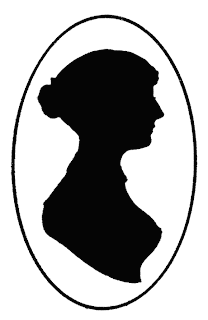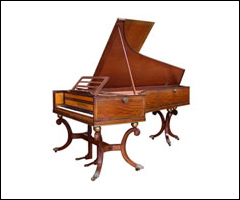Three entertaining and informative presentations filled Saturday’s meeting of the Greater Chicago Region of the Jane Austen Society of North America – “Staging Sensibility: Jane Austen and the Performing Arts.” Along with many conversations centering on the Royal Wedding, members were fascinated by talks by Dr. Gillian Dow and Dr. Erin Smith, as well as an appearance by Jane Austen herself, in the person of Debra Ann Miller, all celebrating the 200th anniversary of Jane’s Austen’s first novel, Sense and Sensibility (1811).
Dr. Gillian Dow is a Lecturer at Chawton House Library in England and at the University of Southampton School of Humanities where she specializes in the literature of the 18th c, particularly French literature in Britain 1780-1830, cross-channel migration of ideas. Her topic for the morning was fascinating. “An Excess of Sensibility (for which we were always remarkable): Jane Austen, Marianne, and the French Tradition.”
Addressing the theme of female hysteria in literature, she began by discussing Jane Austen’s Love and Freindship, from her juvenilia, in which Laura, writing to Marianne (advice to her friend’s daughter), relates her hyper-sensibility, alternately swooning and fainting at every turn of the plot. It is the kind of parody of exaggerated characters and overblown plots that the clever and witty young Jane Austen wrote for the amusement of her family. The female hysteric was a very familiar character in fiction of the time in Britain and on the continent. Dr. Dow introduced us to the novels of Pierre de Marivaux, a popular French author of the 18th c, whose novel La Vie de Marianne was popular in England in the early years of the 18th c, and was considered to be an influence on Fielding, Richardson and Fanny Burney, among others.
Dr. Dow related the enlightening story of the French translation of Austen’s Sense and Sensibility by French novelist Isabelle Montolieu (1751-1832). From the letters of Austen sister-in-law Eliza de Feuillide. we know that Jane Austen read Montolieu’s novel entitled Caroline de Lichtfield (1780’s), but Austen probably never knew of the translation. Dr. Dow compared passages of the novel in Austen’s original English to the corresponding translated French passages. Montolieu certainly added dramatically to the passages describing Marianne’s emotional behavior, to a comical extent in the view of most of the audience. Or did that surprised laughter reflect dismay at the transformation of our Jane’s sacred text?
Dr. Dow discussed Jane Austen’s attitude toward sensbility, in which she differentiates between sensibility that is real and pure, as in Marianne Dashwood, and the phony and overly emotional sentimentality of other characters, such as the Steele sisters. The same kind of contrast, she said, could be found in Austen’s portraits of Colonel Brandon and Willoughby, the former being an honorable man of feeling, complex and well-rounded, the latter showing the wrong side of sensibility, i.e. impulsive and ill-considered behavior reflecting shallowness and sham sincerity.
Everyone was buzzing about the amazing French translation and surprise that it, not the original English text, was sometimes used as the basis for translation of Sense and Sensibility into other European languages for many years. What, we wondered, would we have thought of Jane Austen if this exaggerated and hysterical version was our first introduction to her work?
Dr. Erin Smith and Elisabeth Lenckos of the University of Chicago, Program Director for JASNA GCR.
“Jane Austen and Ballet: Dances of Hysteria in Sense and Sensibility and Giselle” was Dr. Smith’s topic. Her research into the theatrical ballets of the late 18th c. and up to the 1840’s when Giselle was created lead her to believe that the romantic sensibilities of the period grew out of shared themes. Common to many balletic structures are young women on the brink of marriage, a moment of many dramatic possibilities, including alteration into a story of a female scorned and abandoned. Ballet was particularly well suited to portraying the “restless pain of mind and body” of the hysterical woman who goes “mad for love.” In fact, Dr. Smith pointed out, these are almost the very words Jane Austen uses as Col. Brandon describes the fate of Eliza I.
Dr. Smith demonstrates some of the most characteristic movements and gestures of 18th c. ballet.
Before, after and during luncheon we shopped at the Emporium — beautiful shawls, fashion prints, jewelry and hats were extremely tempting.
Miss Jane Austen herself graced our meeting — in the person of actor Debra Ann Miller, who presented a charming account of Miss Austen’s life, mainly in her own words.
Among the honored guests were Marsha Huff, previous past-president of JASNA (l) and Karen Dow, proud mother of Dr. Gillian Dow, visiting from Yorkshire, on her very first trip to Chicago.

















